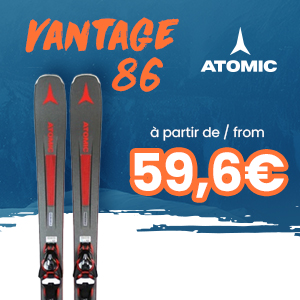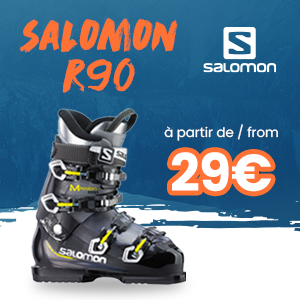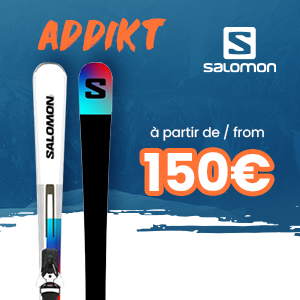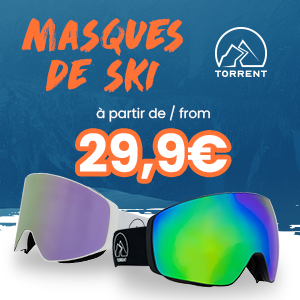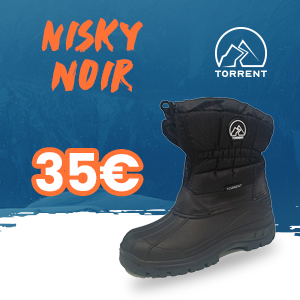
Choosing the right size ski helmet isn't just about comfort; it's about ensuring safety and performance on the slopes. At SkiOccas, we know that finding the right size helmet is essential. perfect fit may seem complex. That's why we've created this simple and practical guide to help you measure, select, and adjust your ideal ski helmet, ensuring safe and enjoyable descents. Ready to secure your happiness on the slopes? Let's delve into the art of choosing the right ski helmet.
Why is the size of your ski helmet crucial ?
Choose the size of your ski helmet is essential for your comfort and safety. A well-fitting helmet provides effective protection during falls and remains comfortable all day. A poor fit, on the other hand, can compromise protection or cause discomfort, detracting from the experience on the slopes. At SkiOccas, we guide you to find the right helmet. ski helmet Perfect, ensuring safety and enjoyment on the snow.
Measure like a pro: find your helmet size
The key to fully enjoying the slopes lies in the equipment, and that starts with a perfectly fitting ski helmet. Here's how you can accurately measure your head to find that ideal helmet.
What you need to get started
To get started, you will only need a few simple tools:
- • A flexible measuring tape: The essential tool for taking measurements around your head. Opt for a model made of fabric or flexible plastic to conform to the shape of your skull.
- • A mirror: To ensure that the measuring tape is correctly positioned all around your head.
- • A notepad and a pen: To record your measurements and compare them with the helmet size charts.
Step-by-step instructions for measuring your head circumference
Follow these steps for an accurate measurement of your head circumference, ensuring you choose a ski helmet that fits perfectly:
- 1. Position the measuring tape: Place the measuring tape approximately 1 cm above your eyebrows, which corresponds to the widest part of your head. Ensure the tape is horizontal all around your head and snug but not tight.
- 2 • Take the measurement: With the measuring tape in place, look in the mirror to check its alignment. It should pass just above your ears and remain level all the way around your head. Once in place, read the measurement accurately.
- 3 • Note your measurement: Write down the measurement in centimeters. Most ski helmet manufacturers use centimeters for sizing, but some may also list sizes in inches, so keep both measurements handy in case you need them.
- 4 • Repeat if necessary: To ensure accuracy, take the measurement two or three times. If you obtain different results, use the average of these measurements as a reference.
With these measurements in hand, you're ready to consult the ski helmet manufacturers' size charts to find the perfect fit. Remember, a good ski helmet should fit comfortably without pressing or shifting when you shake your head.
Deciphering the helmet size chart
From measurement to size
When you look at a ski helmet size chart, you're faced with a series of measurements and conversions that can seem complex at first. Here's how to decipher them to find the perfect size for your ski helmet.
Advice : Measure the circumference of your head at the level of your forehead, just above your eyebrows.
- • XS (Extra Small): For head circumferences measuring between 51 and 52 cm. Ideal for young children or adults with a small head circumference.
- • S (Small): Suitable for people with a head circumference of 53 to 54 cm. Suitable for teenagers or adults with a slightly smaller than average head.
- • M (Medium): The standard size, covering head circumferences of 55 to 56 cm. This is the most commonly chosen size, suitable for the majority of adults.
- • L (Large): For those with a head circumference of 57 to 58 cm. Choose this size if you find the medium-sized helmets a little too tight.
- • XL (Extra Large): Suitable for head circumferences of 59 to 60 cm. For people with a larger head circumference, offering a comfortable fit without being too tight.
- • XXL (Double Extra Large): The largest size, for head circumferences of 61 to 62 cm. Ensures a secure and comfortable fit even for the largest head sizes.
Tips for choosing between two sizes: If your measurement falls between two sizes, consider your personal preference for a tighter or looser fit. Some manufacturers also offer helmets with adjustment systems, allowing for a more personalized fit.
Expert advice for a perfect fit
Adjust it like a glove.
A ski helmet should fit the shape of your head comfortably, without causing painful pressure points. Here are some tips to achieve this:
- • Chin strap: The strap should be tight enough to keep the helmet from moving, but you should still be able to open your mouth comfortably. A good test is to yawn: if the helmet lifts up, tighten the strap.
- • Comfort foams: The inner padding should be in full contact with your head, without creating any pressure points. If the helmet has removable padding, adjust or replace it as needed to improve the fit.
- • Adjustment systems: Many modern helmets are equipped with adjustment systems at the back. Use these mechanisms to fine-tune the fit around your head. The helmet should feel secure but not constricting.
- • Position on the head: The helmet should sit a few centimeters above the eyebrows, protecting the forehead without obstructing vision. If the helmet slips forward or backward, adjust the strap and other settings.
Frequently asked questions about ski helmet sizes
Can I wear a beanie under my ski helmet ?
While some skiers choose to wear a beanie under their helmet for comfort or style, this can affect the helmet's fit and safety. It's recommended to use a helmet designed to provide sufficient thermal insulation without requiring an additional beanie. If you do choose to wear a beanie, always ensure the helmet fits properly.
How do I adjust the straps on my ski helmet ?
The chin strap should be adjusted so that you can fit a finger between the strap and your chin. It shouldn't be so tight that it's uncomfortable, nor so loose that it doesn't hold the helmet in place. The side straps should form a V that snugly frames your ears.
How often should I replace my ski helmet ?
Experts recommend replacing your ski helmet every 3 to 5 years, depending on usage. However, if your helmet has been involved in a significant impact, it should be replaced immediately, as the internal structure may be damaged, even if no external damage is visible.
Why is Skioccas your best choice for ski helmets ?
- • Quality verified: Each helmet undergoes rigorous inspection to guarantee its safety and reliability. You're buying proven quality at a used price.
- • Professional interview: We ensure that each helmet is cleaned and maintained by professionals, offering a ready-to-use product right out of the box.
- • Expert advice: Our passionate and expert team is here to guide you towards the helmet that perfectly meets your needs, ensuring an ideal fit.
- • Great price: Enjoy excellence without the premium price. SkiOccas offers top brand helmets at a fraction of the cost of new ones.
- • Responsible choice: Buying second-hand from SkiOccas also means contributing to more sustainable consumption, by giving a second life to quality equipment.

Choosing the perfect ski helmet is essential for safe and enjoyable winter adventures. At SkiOccas, we pride ourselves on offering an impeccable selection of pre-owned helmets, combining high quality, verified safety, and attractive prices. Our passion for winter sports and our expertise are at your service to help you navigate our options and find the helmet that will accompany you on the slopes.
